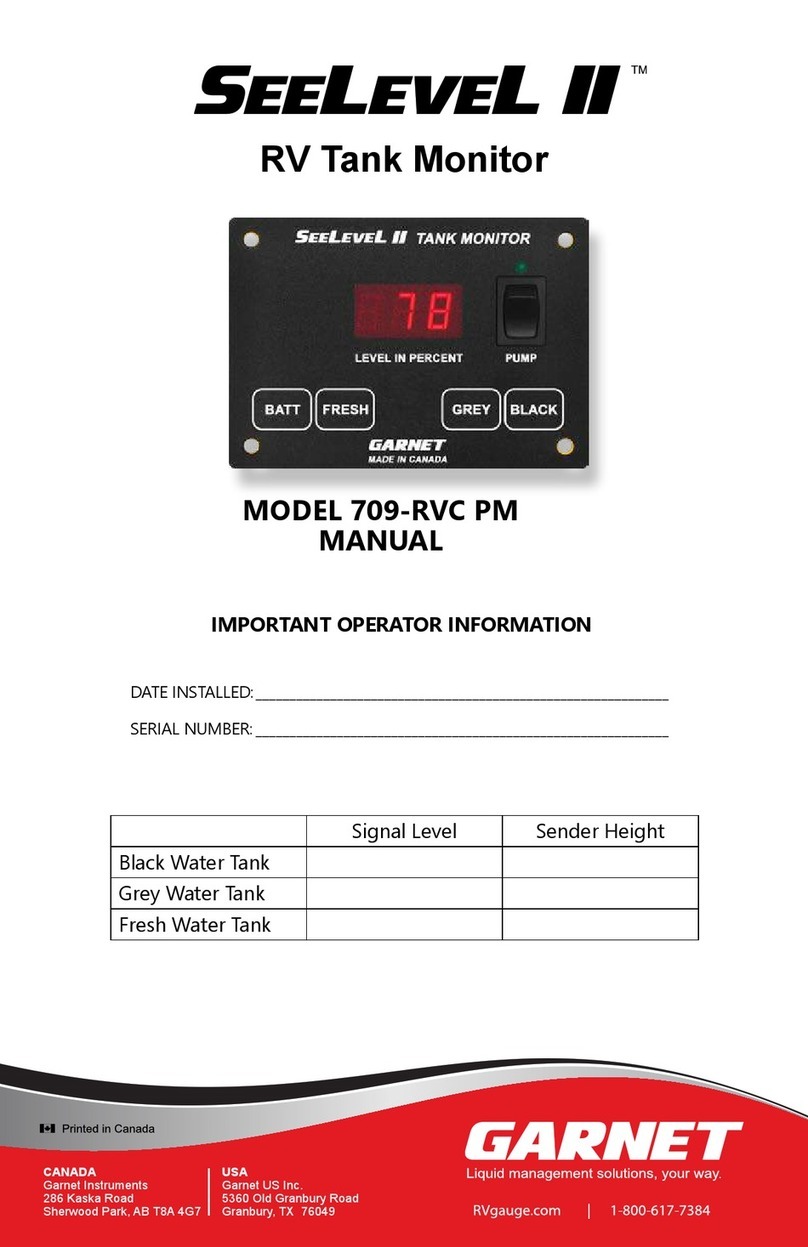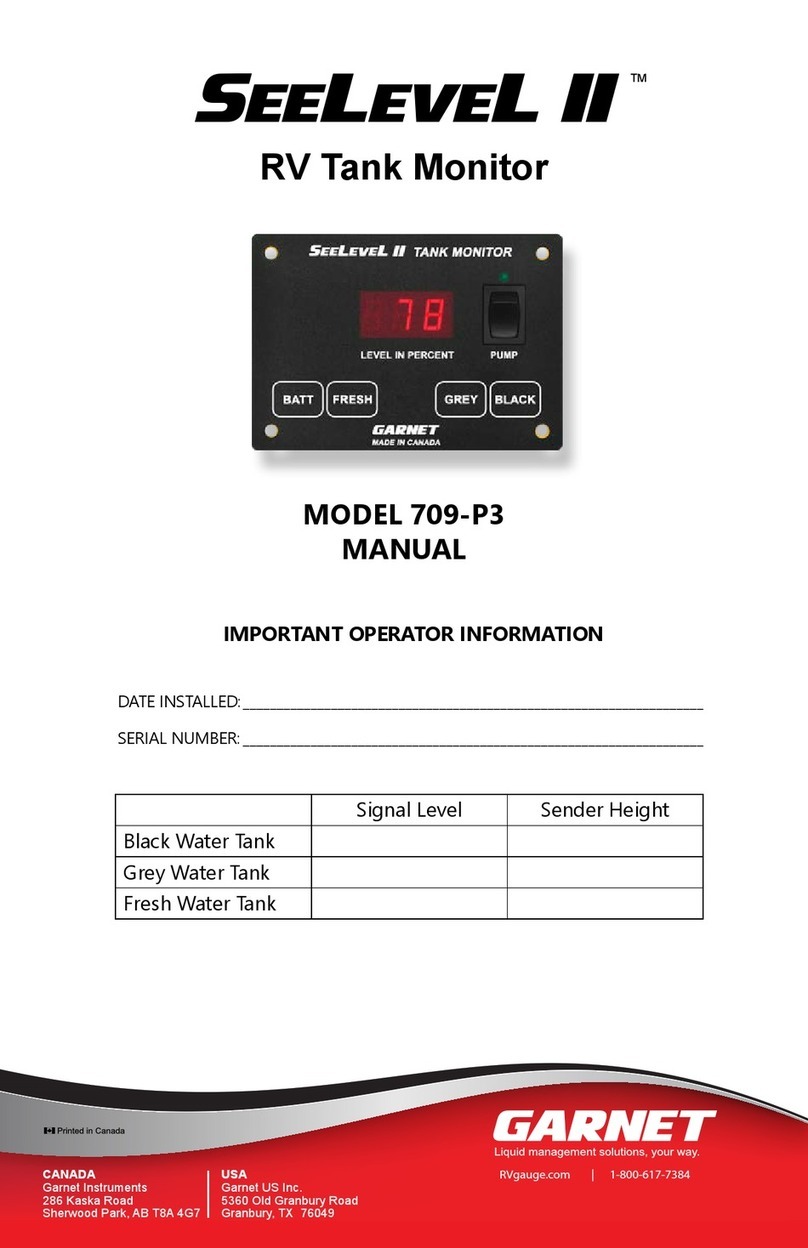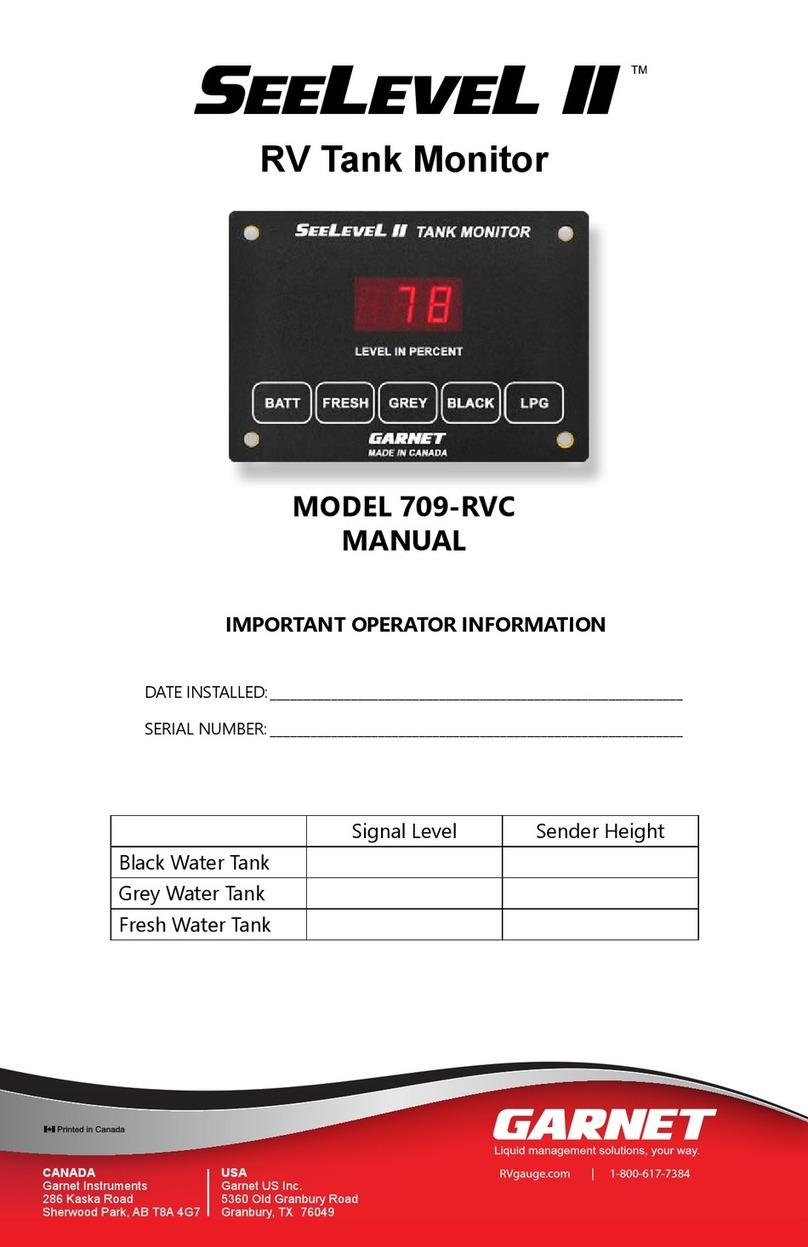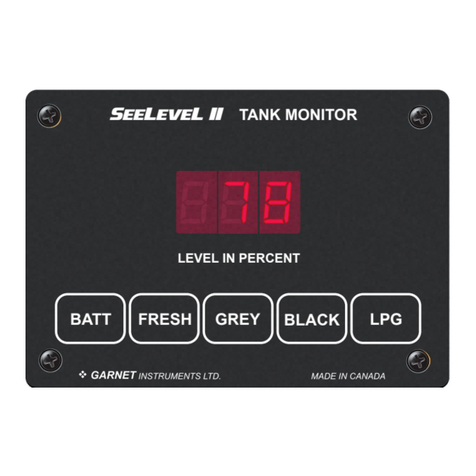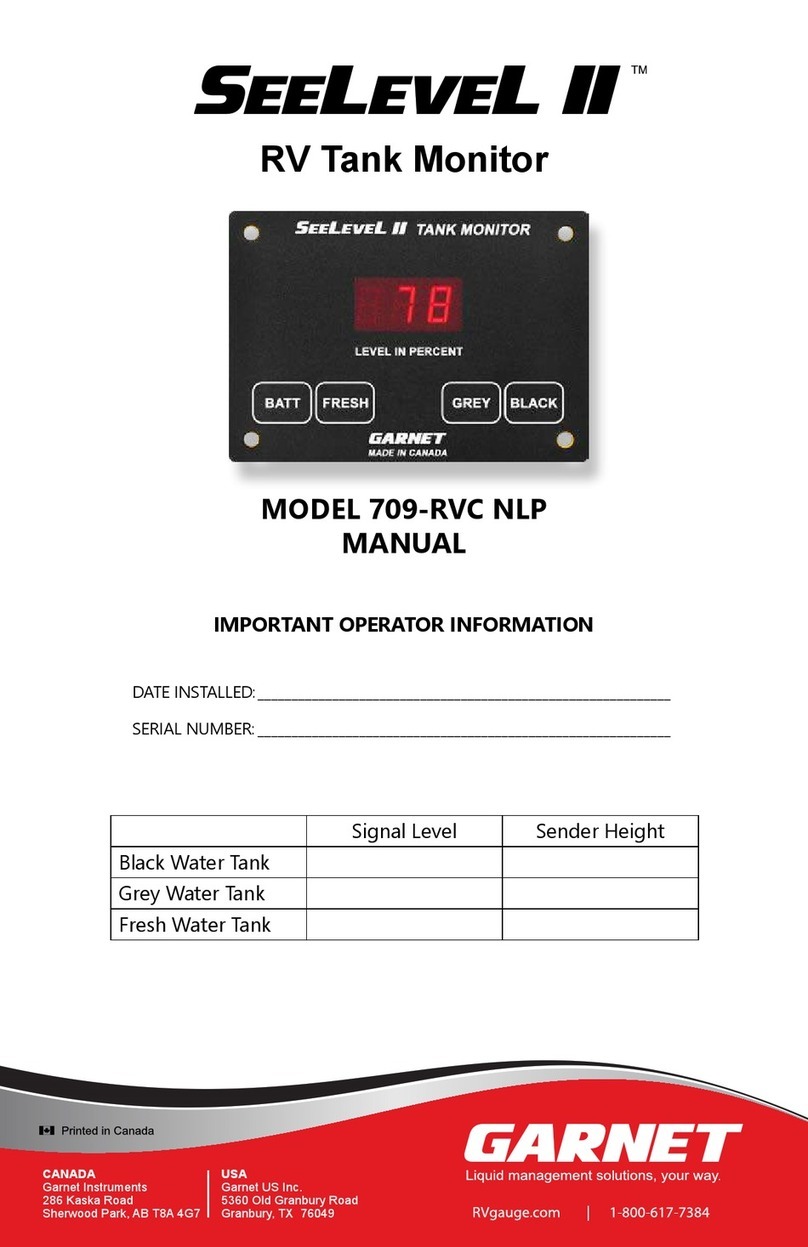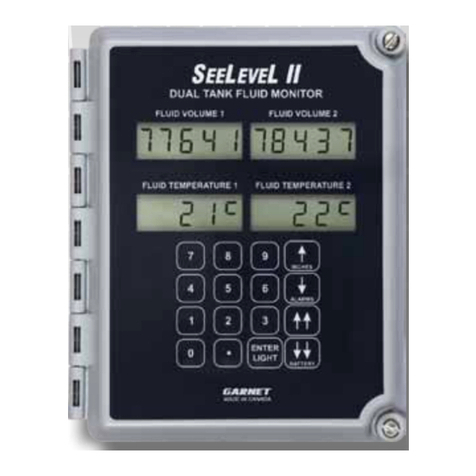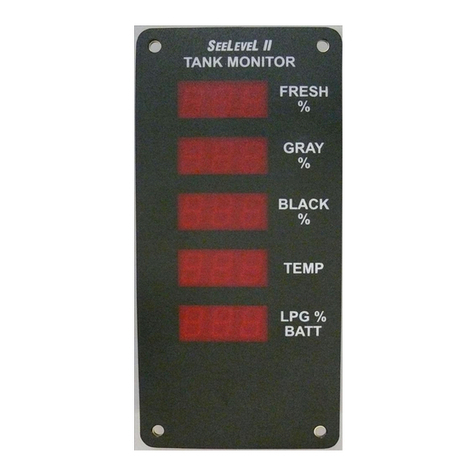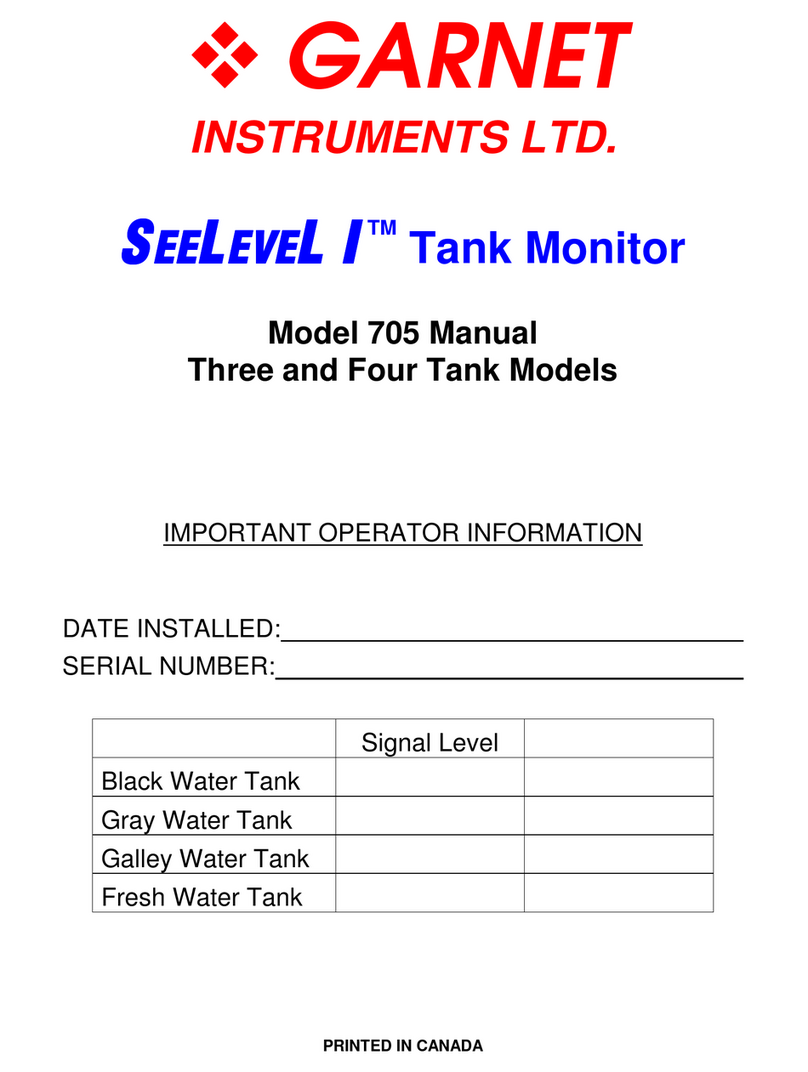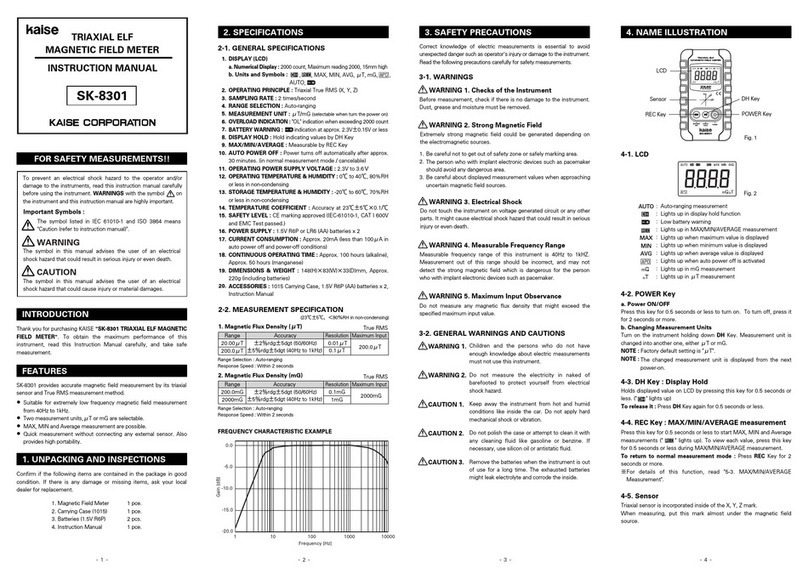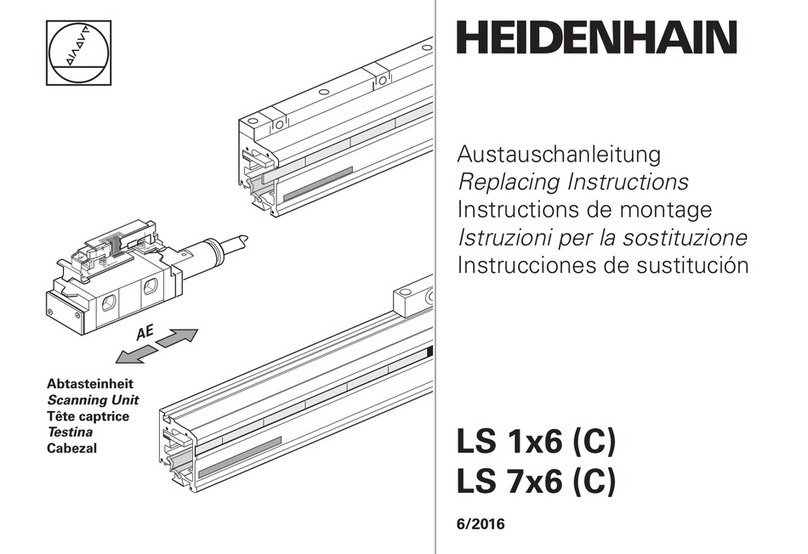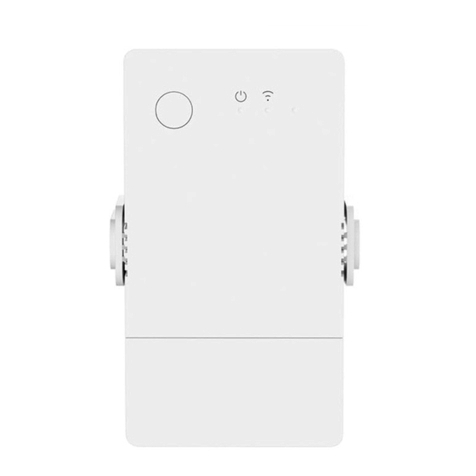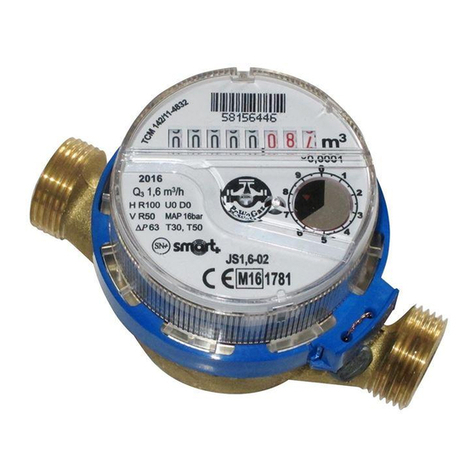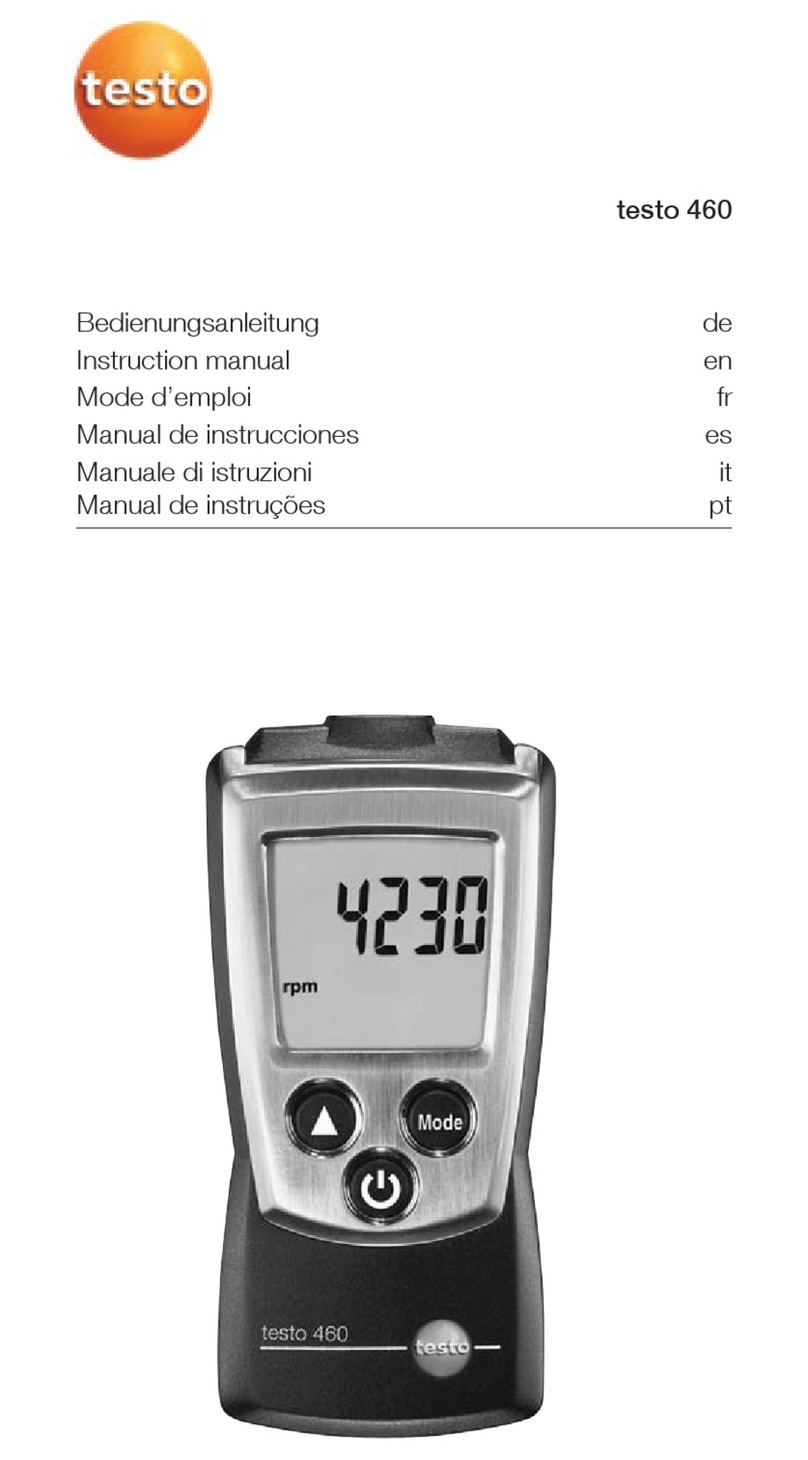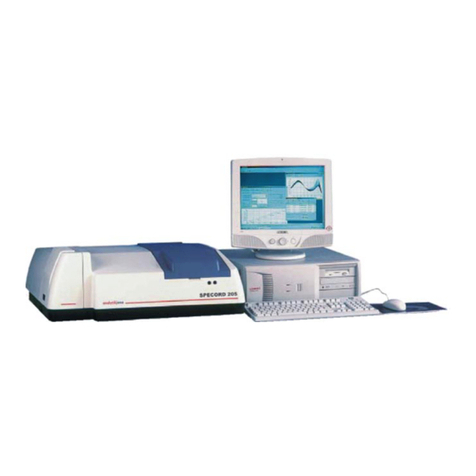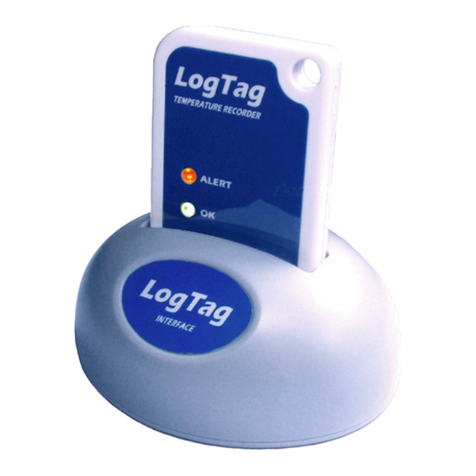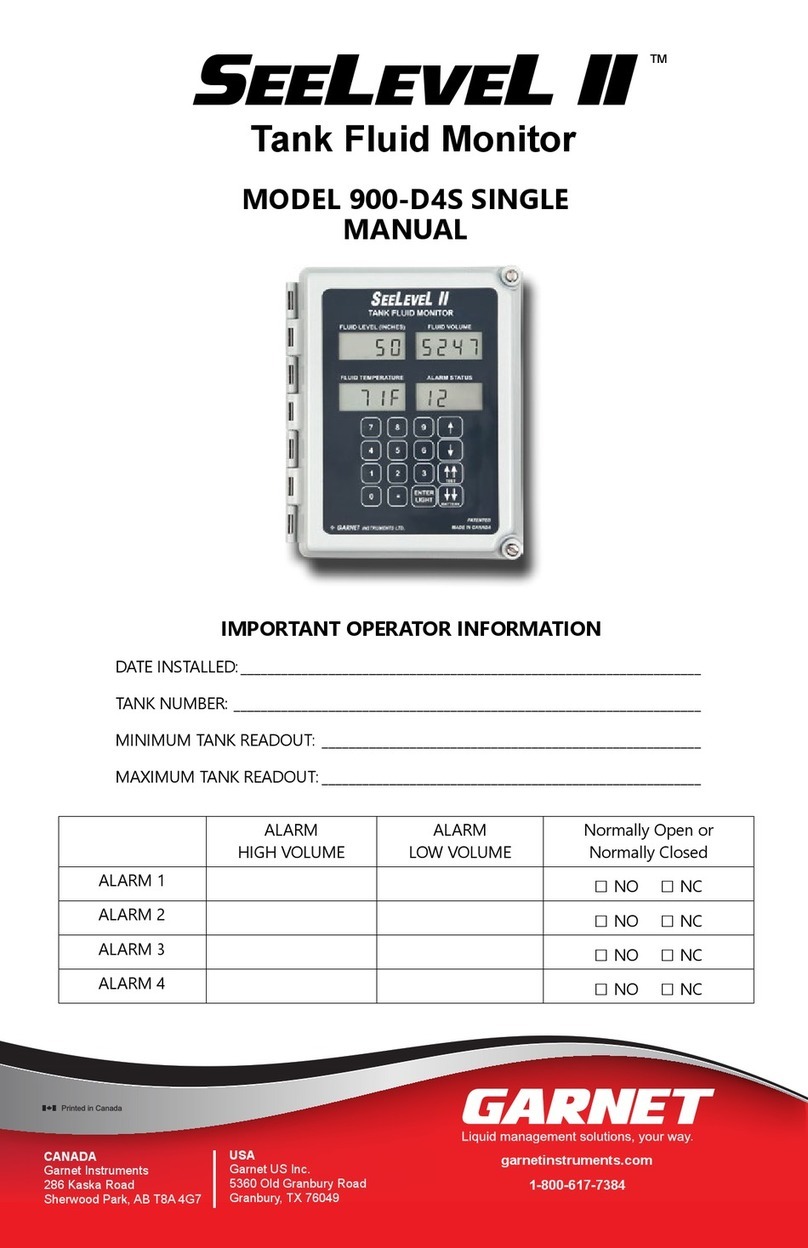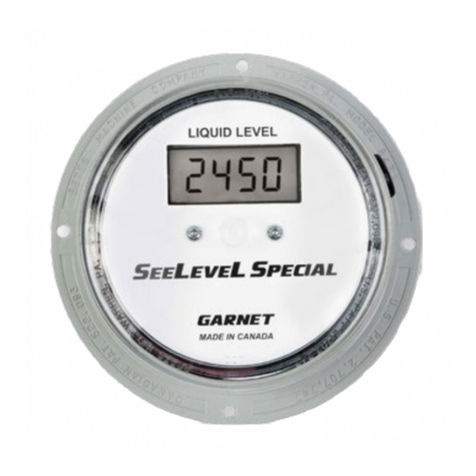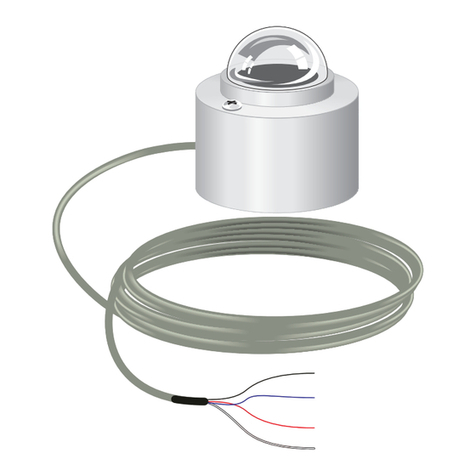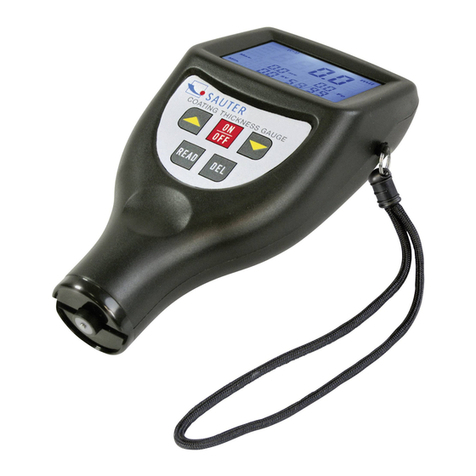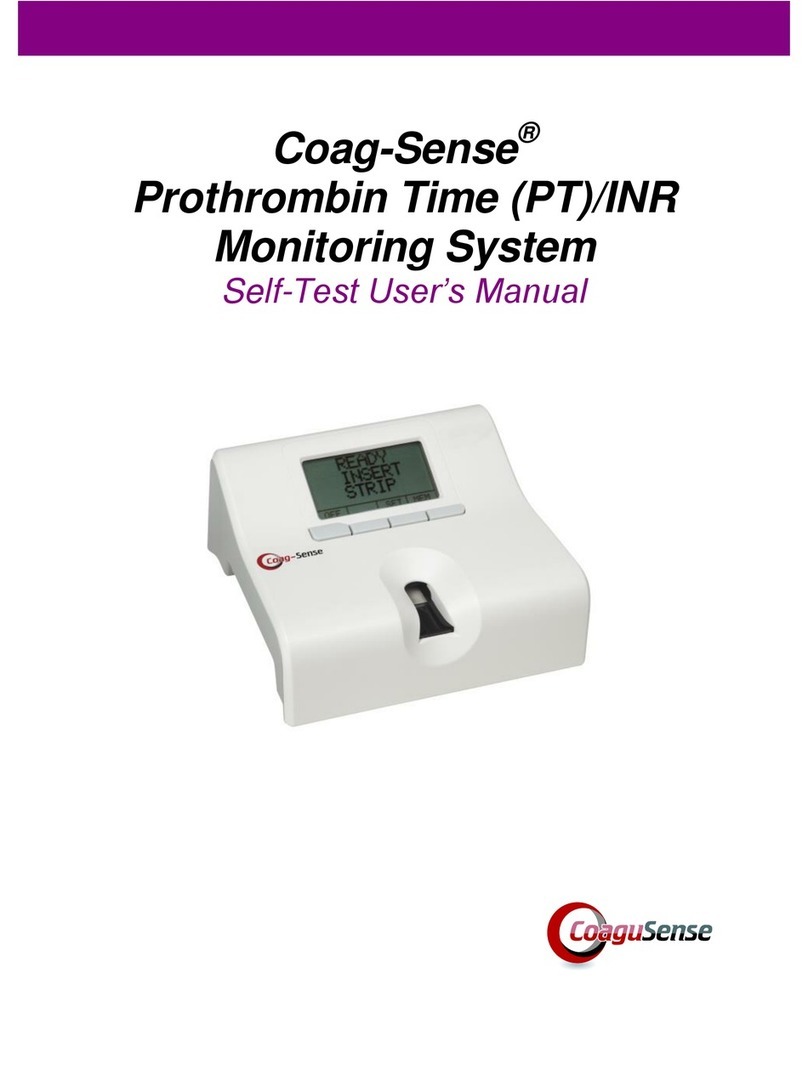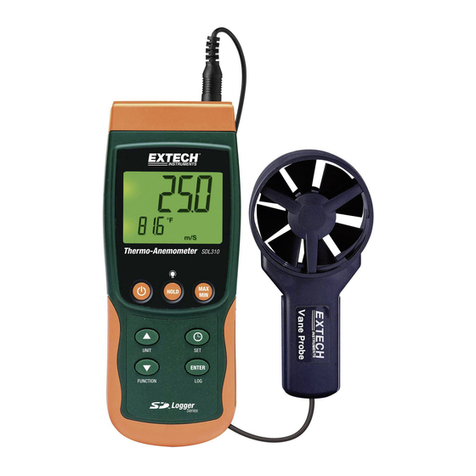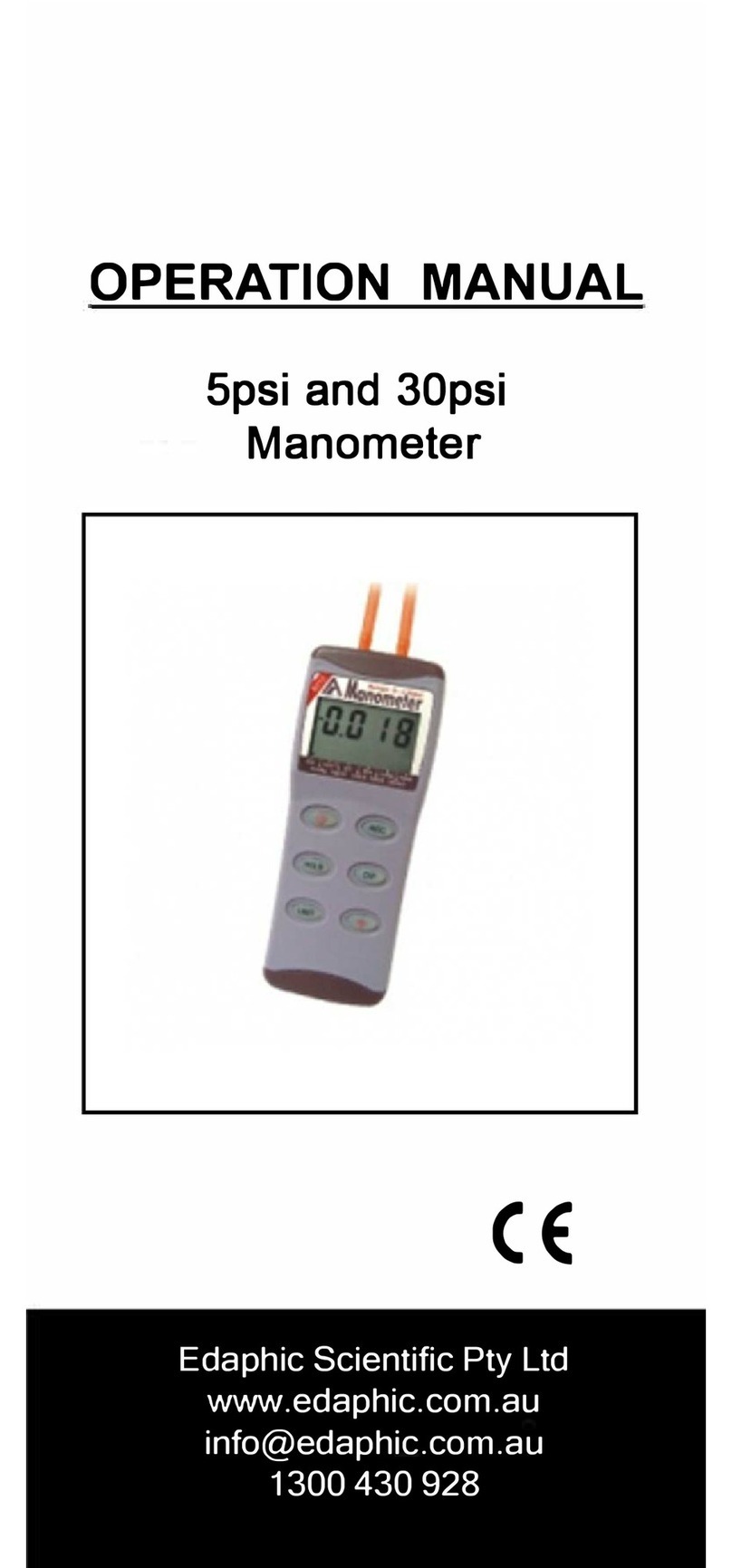
Page 15
809-DM Manual
(t.An1) on the lower right display will turn on to indicate that there
is a bypassed overll warning alarm for that tank. The bypass
is automatically removed when the tank level drops below the
A3 set point, which is normally set near the minimum operating
tank level. This automatic reset of the bypass ensures the alarm
is active the next time the tank is lled. The bypass can also be
manually removed by pressing the TOTAL and HORN buttons at
the same time.
The overll shutdown alarm is used as an emergency shutdown
of the loading process to prevent tank overlling and spills. The
shutdown alarm works on all tanks, whether viewed or scanned.
The trip point of the alarm is set using the 817 Truck Gauge
Programmer as A1, with the bypass reset point as A3. The
shutdown point is always above the warning point. This alarm is a
backup used during tank lling to shut down the loading process
if the operator is unable to shut off loading. In addition, if a fault
occurs which lls any of the tanks to a dangerously high level,
the alarm will provide an emergency shutdown. The shutdown is
normally used to turn off the truck engine or loading pump.
When the tank level is below the trip point the alarm is off and the
shutdown alarm output allows the truck engine or loading pump
to operate. The green LED below SHUT DOWN button will be on.
When the tank level rises so that it is equal to or above the trip
point, the alarm is activated, which turns off the green LED, turns
on the red SHUT DOWN LED and turns off the truck engine or
loading pump. The upper right display shows the tank number
that is in shutdown alarm (whether the viewed tank or a scanned
tank) and the lower left display shows “FULL”. If there are multiple
tanks in either shutdown or rising level alarm, then the display will
show each alarm indication in turn. When the PTO is disengaged,
the display will show the alarm but the green LED will be on and
the alarm output will continue to allow engine or pump operation.
This prevents slosh from shutting down the engine during driving.
Only the viewed tank can be bypassed. Consequently, a scanned
tank in alarm must be selected as the viewed tank using the
corresponding tank button. To bypass, press the SHUT DOWN
button, this will turn off the SHUT DOWN LED, turn on the green
LED, and allow the engine or pump to be restarted. While the
SHUT DOWN button is pressed the upper left display will show
“bYPS”. The right decimal (tAn.1) on the lower right display will
turn on to indicate that there is a bypassed overll shutdown
alarm for that tank. If both the warning and shutdown alarms
are bypassed then both decimals will be on (t.An.1). The bypass
is automatically removed when the tank level drops below the A3
set point, which is normally set near the minimum operating tank




















